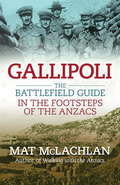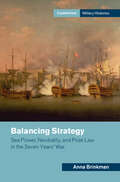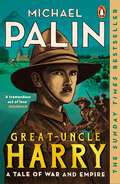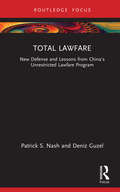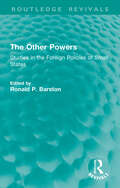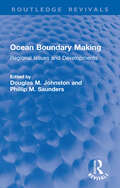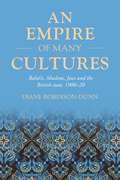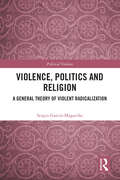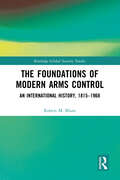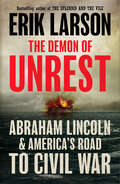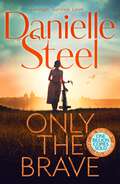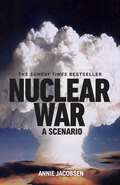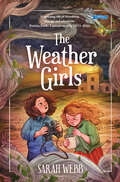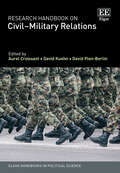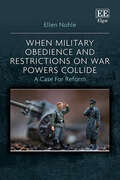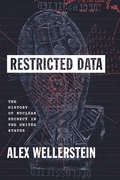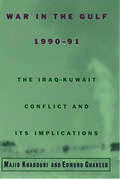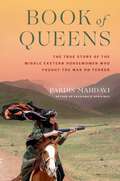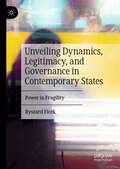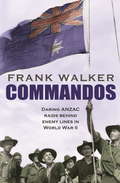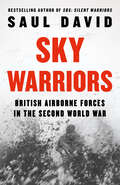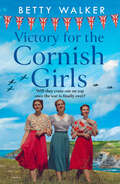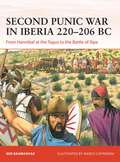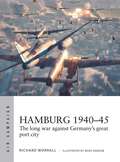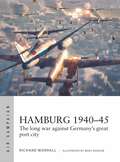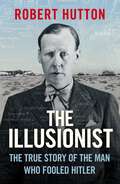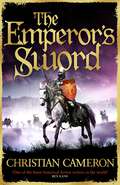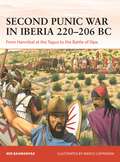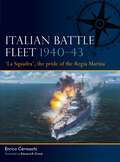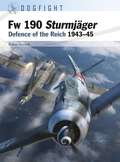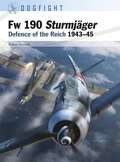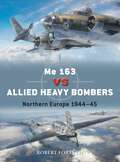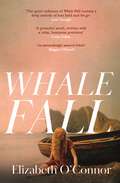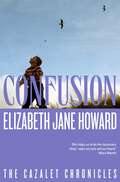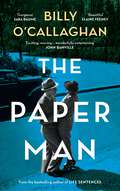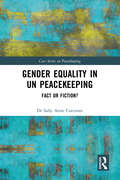- Table View
- List View
Gallipoli: The battlefield guide
by Mat McLachlanThe essential travel companion for anyone visiting Gallipoli.Each year, thousands of Australians visit Gallipoli to pay homage and see where their forebears fought, suffered and died. Anzac Cove, Quinn's Post, Lone Pine - the iconic places where our national legend was forged.In this essential and authoritative guide, practical information is combined with historical detail, alongside revealing and often heartrending quotes from the letters and diaries of the Anzacs themselves.- Detailed easy-to-follow plans for walking and driving tours across the main battlefields- Maps, photos and historical commentary to put the campaign in context- Everything you need to know where to go, where to stay and how to get there.Walk where the Anzacs walked, see where they fought and marvel at their courage.
Balancing Strategy: Sea Power, Neutrality, and Prize Law in the Seven Years' War (Cambridge Military Histories)
by null Anna BrinkmanWhat is the relationship between seapower, law, and strategy? Anna Brinkman uses in-depth analysis of cases brought before the Court of Prize Appeal during the Seven Years' War to explore how Britain worked to shape maritime international law to its strategic advantage. Within the court, government officials and naval and legal minds came together to shape legal decisions from the perspectives of both legal philosophy and maritime strategic aims. As a result, neutrality and the negotiation of rights became critical to maritime warfare. Balancing Strategy unpicks a complex web of competing priorities: deals struck with the Dutch Republic and Spain; imperial rivalry; mercantilism; colonial trade; and the relationships between metropoles and colonies, trade, and the navy. Ultimately, influencing and shaping international law of the sea allows a nation to create the norms and rules that constrain or enable the use of seapower during war.
Great-Uncle Harry: A Tale of War and Empire
by Michael Palin'An important historical record and a well-paced story in its own right, Great-Uncle Harry is also much more than that: a tremendous act of love.' Guardian___________________________________From the time, many years ago, when Michael Palin first heard that his grandfather had a brother, Harry, he was determined to find out more about him.The quest that followed involved hundreds of hours of painstaking detective work. Michael dug out every bit of family gossip and correspondence he could. He studied every relevant official document. He tracked down what remained of his great-uncle Harry's diaries and letters, and pored over photographs of First World War battle scenes to see whether Harry appeared in any of them. He walked the route Harry took on that fatal, final day of his life amid the mud of northern France. And as he did so, a life that had previously existed in the shadows was revealed to him.Great-Uncle Harry is an utterly compelling account of an ordinary man who led an extraordinary life. A blend of biography, history, travelogue and personal memoir this is Michael Palin at his very finest.___________________________________________PRAISE FOR EREBUS:'Beyond terrific. I didn't want it to end.' BILL BRYSON'Magisterial . . . Palin brings energy, wit and humanity to a story that has never ceased to tantalise people.' THE TIMES'Everybody's talking about it . . . A brilliant book.' CHRIS EVANS'I absolutely loved it: I had to read it at one sitting.' LORRAINE KELLY
Total Lawfare: New Defense and Lessons from China’s Unrestricted Lawfare Program
by Patrick S. Nash Deniz GuzelThis book advocates for a novel doctrine of ‘total lawfare’ as part of a comprehensive approach to modern hybrid warfare.The book begins by introducing the military concept of ‘limited lawfare’ in the context of modern geopolitical conditions. It proceeds to set out a conceptual history of lawfare in the West, highlighting conceptual shortcomings and NATO’s limited capabilities in this branch of hybrid warfare. It then provides a comparative case study and strategic threat assessment of the Chinese concept of ‘unrestricted lawfare’. Against this, the book grounds an ethical doctrine of ‘total lawfare’ within the Western jurisprudential tradition and translates this into practice as a key pillar of modern defense strategy under the rule of law. The book concludes by advocating for a Thielian ‘New Defense’ industry centered upon ‘total lawfare’ as a legitimate and effective Western response to enemy aggression.The book will be of interest to academics, policy-makers, and students working in the fields of lawfare, jurisprudence, and military law.
Total Lawfare: New Defense and Lessons from China’s Unrestricted Lawfare Program
by Patrick S. Nash Deniz GuzelThis book advocates for a novel doctrine of ‘total lawfare’ as part of a comprehensive approach to modern hybrid warfare.The book begins by introducing the military concept of ‘limited lawfare’ in the context of modern geopolitical conditions. It proceeds to set out a conceptual history of lawfare in the West, highlighting conceptual shortcomings and NATO’s limited capabilities in this branch of hybrid warfare. It then provides a comparative case study and strategic threat assessment of the Chinese concept of ‘unrestricted lawfare’. Against this, the book grounds an ethical doctrine of ‘total lawfare’ within the Western jurisprudential tradition and translates this into practice as a key pillar of modern defense strategy under the rule of law. The book concludes by advocating for a Thielian ‘New Defense’ industry centered upon ‘total lawfare’ as a legitimate and effective Western response to enemy aggression.The book will be of interest to academics, policy-makers, and students working in the fields of lawfare, jurisprudence, and military law.
The Other Powers: Studies in the Foreign Policies of Small States (Routledge Revivals)
Originally published in 1972, this book examines the scope and possibilities for small states in the conduct of their foreign policies. In the introduction the editor discusses the problem of defining the term ‘small state’ and outlines the restraints they face and the type of international roles they play. The subsequent chapters analyse the foreign policies of Norway, the Netherlands, Switzerland, Zambia, Israel, Cyprus, Cuba, Singapore and New Zealand. In each study the author examines the factors which shape that country’s foreign policy objectives, the organizational structures employed to formulate and implement foreign policy, the type and level of international involvement and the methods used to deal with the political, economic and security issues which make up and stem from the external policies. The book will be of interest to specialists and students of government, foreign policy analysis and other branches of international relations
The Other Powers: Studies in the Foreign Policies of Small States (Routledge Revivals)
by Ronald P. BarstonOriginally published in 1972, this book examines the scope and possibilities for small states in the conduct of their foreign policies. In the introduction the editor discusses the problem of defining the term ‘small state’ and outlines the restraints they face and the type of international roles they play. The subsequent chapters analyse the foreign policies of Norway, the Netherlands, Switzerland, Zambia, Israel, Cyprus, Cuba, Singapore and New Zealand. In each study the author examines the factors which shape that country’s foreign policy objectives, the organizational structures employed to formulate and implement foreign policy, the type and level of international involvement and the methods used to deal with the political, economic and security issues which make up and stem from the external policies. The book will be of interest to specialists and students of government, foreign policy analysis and other branches of international relations
Ocean Boundary Making: Regional Issues and Developments (Routledge Revivals)
Originally published in 1988, this book was written at a time when many nations were engaged in various forms of ocean boundary making. This created new regional pressures and the need for collective regional responses to these issues. This book examines the issues at stake and the boundary making processes. It discusses these in a general way, showing how the Third UN conference on the Law of the Sea helped resolve the problems whilst leaving some issues unresolved. The book goes onto examine the issues and boundary making processes in 7 important areas of the world
Ocean Boundary Making: Regional Issues and Developments (Routledge Revivals)
by Douglas M. Johnston Phillip M. SaundersOriginally published in 1988, this book was written at a time when many nations were engaged in various forms of ocean boundary making. This created new regional pressures and the need for collective regional responses to these issues. This book examines the issues at stake and the boundary making processes. It discusses these in a general way, showing how the Third UN conference on the Law of the Sea helped resolve the problems whilst leaving some issues unresolved. The book goes onto examine the issues and boundary making processes in 7 important areas of the world
An empire of many cultures: Bahá’ís, Muslims, Jews and the British state, 1900–20 (Studies in Imperialism #212)
by Diane Robinson-DunnBased upon extensive archival research and bringing to life the words and actions of extraordinary individuals from the early 20th century, this book calls into question contemporary assumptions about the appreciation of diversity as a solely postcolonial phenomenon. It shows how Bahá’í, Muslim, and Jewish leaders prior to and during WWI found value in the existence of many different religions, races, languages, nations, and ethnicities within the British Empire. Recognition of this heterogeneity combined with sympathy for certain liberal traditions allowed those historical actors to engage with that imperial state and culture in ways that would have an impact on future generations and relevance to modern debates.
An empire of many cultures: Bahá’ís, Muslims, Jews and the British state, 1900–20 (Studies in Imperialism #212)
by Diane Robinson-DunnBased upon extensive archival research and bringing to life the words and actions of extraordinary individuals from the early 20th century, this book calls into question contemporary assumptions about the appreciation of diversity as a solely postcolonial phenomenon. It shows how Bahá’í, Muslim, and Jewish leaders prior to and during WWI found value in the existence of many different religions, races, languages, nations, and ethnicities within the British Empire. Recognition of this heterogeneity combined with sympathy for certain liberal traditions allowed those historical actors to engage with that imperial state and culture in ways that would have an impact on future generations and relevance to modern debates.
Violence, Politics and Religion: A General Theory of Violent Radicalization (ISSN)
by Sergio García-MagariñoThis book offers a general theory of violent radicalization and uses case studies from a variety of different countries and groups to illustrate this.The first and fundamental objective of the book is to provide an explanatory framework to understand phenomena related to violent radicalization, deradicalization, the prevention of radicalization and to political violence; in particular, that inspired by religion. The second objective follows from the first. Understanding violent radicalization of religious inspiration implies delving into two key concepts: violent radicalization and religion. This second objective is indeed elusive, since, on the one hand, many liberal democracies have undergone processes of secularization or, at least, have lost interest in examining religion in public debates. Therefore, rigorously exploring social problems where religion seems to be involved, in one way or another, is complicated. Moreover, the notion of violent radicalization, in turn, is highly contested and confused with other ideas, such as polarization, extremism, terrorism or nonviolent radicalization. Finally, the book aims to bring theory into dialogue with empirical phenomena, and to test it against concrete cases related to violent radicalization and its prevention, on the one hand, and religion, on the other. The book’s originality comes from both its innovative, methodological approach and its breadth, with cases from several countries (Spain, the United States, Ireland, India, Israel, Russia and Colombia) and different ideological groups (revolutionary communists, nationalist movements, Jihadist groups, white and black supremacists).This book will be of much interest to students of terrorism and political violence, radicalization, sociology and international relations in general.
Violence, Politics and Religion: A General Theory of Violent Radicalization (ISSN)
by Sergio García-MagariñoThis book offers a general theory of violent radicalization and uses case studies from a variety of different countries and groups to illustrate this.The first and fundamental objective of the book is to provide an explanatory framework to understand phenomena related to violent radicalization, deradicalization, the prevention of radicalization and to political violence; in particular, that inspired by religion. The second objective follows from the first. Understanding violent radicalization of religious inspiration implies delving into two key concepts: violent radicalization and religion. This second objective is indeed elusive, since, on the one hand, many liberal democracies have undergone processes of secularization or, at least, have lost interest in examining religion in public debates. Therefore, rigorously exploring social problems where religion seems to be involved, in one way or another, is complicated. Moreover, the notion of violent radicalization, in turn, is highly contested and confused with other ideas, such as polarization, extremism, terrorism or nonviolent radicalization. Finally, the book aims to bring theory into dialogue with empirical phenomena, and to test it against concrete cases related to violent radicalization and its prevention, on the one hand, and religion, on the other. The book’s originality comes from both its innovative, methodological approach and its breadth, with cases from several countries (Spain, the United States, Ireland, India, Israel, Russia and Colombia) and different ideological groups (revolutionary communists, nationalist movements, Jihadist groups, white and black supremacists).This book will be of much interest to students of terrorism and political violence, radicalization, sociology and international relations in general.
The Foundations of Modern Arms Control: An International History, 1815-1968 (Routledge Global Security Studies)
by Robert M. BlumThis book is an international history of the foundation of modern arms control, highlighting the fact that the instrument is varied, resilient, successful, and enduring.The narrative begins after the Napoleonic wars when newly arisen peace movements focused on arbitration as a path to “ending the war system.” It moves on to the international community’s embrace of “total and complete disarmament” and then to its acceptance of more limited measures by 1968, including the agreements that remain in force today. The book connects the past to the present of multiple negotiations, successful and failed, and underlines how the peace movement increasingly influenced the national policy of the major Western powers, especially the United States. It also highlights the increasing diversification of arms control players, including women and people of color as well as the countries they represented. Based on original research in multinational records and the latest scholarship, the book illustrates the reasons multilateral arms control remains a key instrument of international relations. The chapters are organized both chronologically and thematically, with the result that they cover different amounts of time in order to encompass a given issue and to capture the development of particular threads. The main narrative evolves into a decadeslong quest for a global treaty on “general and complete disarmament,” which otherwise paces the book and shapes its chapters.This book will be of much interest to students of arms control, global governance, peace studies, and International Relations.
The Foundations of Modern Arms Control: An International History, 1815-1968 (Routledge Global Security Studies)
by Robert M. BlumThis book is an international history of the foundation of modern arms control, highlighting the fact that the instrument is varied, resilient, successful, and enduring.The narrative begins after the Napoleonic wars when newly arisen peace movements focused on arbitration as a path to “ending the war system.” It moves on to the international community’s embrace of “total and complete disarmament” and then to its acceptance of more limited measures by 1968, including the agreements that remain in force today. The book connects the past to the present of multiple negotiations, successful and failed, and underlines how the peace movement increasingly influenced the national policy of the major Western powers, especially the United States. It also highlights the increasing diversification of arms control players, including women and people of color as well as the countries they represented. Based on original research in multinational records and the latest scholarship, the book illustrates the reasons multilateral arms control remains a key instrument of international relations. The chapters are organized both chronologically and thematically, with the result that they cover different amounts of time in order to encompass a given issue and to capture the development of particular threads. The main narrative evolves into a decadeslong quest for a global treaty on “general and complete disarmament,” which otherwise paces the book and shapes its chapters.This book will be of much interest to students of arms control, global governance, peace studies, and International Relations.
The Demon of Unrest: Abraham Lincoln And America's Road To Civil War
by Erik LarsonThe internationally bestselling author of The Splendid and the Vile brings to life the pivotal five months between the election of Abraham Lincoln and the start of the Civil War—a slow-burning crisis that finally tore a deeply divided nation in two.
The Librarians of Rue de Picardie: From the bestselling author, a powerful, moving wartime page-turner based on real events
by Janet Skeslien CharlesThe New York Times bestselling author of the The Paris Library returns with a powerful, moving new novel based on the extraordinary true story of Jessie Carson, the American librarian determined to bring books to the children of war-torn France.'This is hands down my book of 2024. A rich, glorious life-affirming ode to the power of books and female solidarity. Simply unforgettable!' KATE THOMPSON'A wonderful story about the power books have not only to inspire, but also to rescue and restore. The characters are so richly drawn... I absolutely loved it' RUTH HOGAN------------------------Under what was left of the roof of the ruined cottage, a girl with pigtails perched on a pile of rubble, hunched over a book...1918: As the Great War rages, Jessie Carson takes a leave of absence from the New York Public Library to work for the American Committee for Devastated France, a group of women determined to rebuild devastated French communities just miles from the front. Upon arrival, Jessie strives to establish something that the French have never seen - children's libraries. She turns ambulances into bookmobiles and trains the first French female librarians. Then she disappears.1987: When NYPL librarian and aspiring writer Wendy Peterson stumbles across a passing reference to Jessie Carson in the archives, she becomes consumed with learning her fate. In her obsession, she discovers that she and the elusive librarian have more in common than their work at New York's famed library, but she has no idea their paths will converge in surprising ways across time.*Published under the title Miss Morgan's Book Brigade in the US*'An astonishing novel with the beating heart of courageous women who change the world through books. For every reader who was once told to get their head out of the clouds because they read too many books, this one is for you... A moving novel of sacrifice, heroism, and inspired storytelling immersed in the power of books to change our lives' PATTI CALLAHAN HENRY'Bursting with remarkable characters and filled with heart-in-mouth moments... an enthralling, emotional story rich in historical detail. Janet Skeslien Charles has done real justice to the legacy of these courageous women; this wonderful book is a gift to the reader' LIESE O'HALLORAN SCHWARZ'Bibliophiles are in for a treat' PUBLISHERS WEEKLY'I found myself captivated by this eye-opening book and reminder of the good that comes from dedicated hard work. I am grateful to Janet Skeslien Charles for educating me about the remarkable women of CARD' ⭐ ⭐ ⭐ ⭐ ⭐ Goodreads reviewer 'I love books about libraries and books. The fact that this book is actually based off of real people is amazing. This book celebrates the contributions that these women made when they are usually swept under the rug. I loved Jessie so much, and I will be thinking of these brave women for a long time to come' ⭐ ⭐ ⭐ ⭐ ⭐ Goodreads reviewer
Only the Brave: The heart-wrenching new story of courage and hope set in wartime Berlin
by Danielle SteelOnly the Brave is a heart-wrenching story of courage and hope set in wartime Berlin, from the billion-copy bestseller Danielle Steel. In 1930s Berlin, dark days dawn under Hitler’s Third Reich. For nineteen-year-old Sophia Alexander, life will never be the same. The daughter of a respected doctor, Sophia has always believed that her destiny is to look after others, and as the persecution of Jewish families begins, she joins a group of dissidents who are committed to helping them to safety.As World War Two is declared, Sophia answers her religious calling and enters a convent, where she continues to fight bravely against the Nazi regime. That is until the fateful day she is arrested and taken to Ravensbrück concentration camp, where her only hope of survival is to escape and attempt the dangerous journey to the border.Sophia’s situation is further complicated when she meets a US airman, shot down nearby. As she nurses him back to health, they grow close, but she is still resolute that her destiny is with the Church.As Sophia looks for a sign of which path to follow, will she have the strength to question what she has committed her whole life to?
Nuclear War: The bestselling non-fiction thriller
by Annie JacobsenThe Sunday Times bestselling edge-of-your-seat non-fiction thriller, perfect for readers of American Prometheus: The Triumph and Tragedy of J. Robert Oppenheimer by Kai Bird and Midnight in Chernobyl by Adam Higginbotham.'Essential' New York Times'A stomach-clenching, multi-perspective, ticking-clock, geopolitical thriller' Forbes'Tells a terrifying story in a devastatingly straightforward way' GuardianNuclear war begins with a blip on a radar screen.This is a minute-by-minute account of what comes next.It has to be read to be believed.There is only one scenario other than an asteroid strike that could end the world as we know it in a matter of hours: nuclear war.Until now, no one outside official circles has known exactly what would happen if a rogue state launched a nuclear missile at the Pentagon. Second by second and minute by minute, these are the real-life protocols that choreograph the end of civilization as we know it.Decisions that affect hundreds of millions of lives need to be made within six minutes, based on partial information, in the knowledge that once launched, nothing is capable of halting the destruction.Based on dozens of new interviews with military and civilian experts who have built the weapons, been privy to the response plans, and taken responsibility for crucial decisions, this is the only account of what a nuclear exchange would look like.Nuclear War is at once a compulsive non-fiction thriller and a powerful argument that we must rid ourselves of these world-ending weapons for ever.'This terrifying book is a must-read for every world leader' Mother Jones'These are scenes straight out of Dr Strangelove' Telegraph'At once methodical and vivid' The Economist
The Weather Girls
by Sarah WebbIt's 1944. Twelve-year-old Grace Devine lives at Blacksod Lighthouse and weather station in County Mayo with her parents and little brother. When a German plane crashes nearby, she and her best friend Sibby risk their lives to save the young pilot. Grace's family take him in, but their neighbours are horrified at having an 'enemy' in their midst. Meanwhile, the Met Office in England suddenly asks Blacksod to send them weather reports every hour. But why? As the wind and rain howl outside, Grace begins to understand that something important is happening, something to do with the war – and she is right in the eye of the storm. A tale of bravery, adventure and a remarkable friendship, inspired by true events from World War 2.
Research Handbook on Civil–Military Relations (Elgar Handbooks in Political Science)
Bringing together leading international scholars, this comprehensive Research Handbook analyses key problems, subjects, regions, and countries in civil-military relations. Showcasing cutting-edge research developments, it illustrates the deeply complex nature of the field and examines important topics in need of renewed consideration.Arranged in five thematic sections, chapters explore the role of armed forces in politics and society, the missions and roles of militaries, and crucial issues of control, compliance and effectiveness. Contributors present theoretically informed and empirically applied research asking novel questions and examining cutting-edge solutions to ongoing problems in the field. They demonstrate the wide range of research methodologies and meta-theoretical traditions in civil-military relations, spanning structuralism, behavioralism, institutionalism, and constructivism. Ultimately, the Research Handbook is a timely insight into the contemporary role of militaries, for example in democratization and autocratization processes and deployment during natural disasters and pandemics.The Research Handbook on Civil–Military Relations will be an invaluable resource for students and scholars of military, security, and strategic studies, as well as comparative politics and military sociology. It will also be an important read for policymakers seeking to better understand the role of the military in society.
When Military Obedience and Restrictions on War Powers Collide: A Case For Reform
by Ellen NohleThis provocative book explores the precarious conflict between the legal restrictions on governments’ power to take military action and the legal liability of soldiers to execute military orders. Adopting a multidisciplinary approach, this insightful book challenges the current distribution of trust between military decision-makers and agents, and how the law of military obedience effectively extends the powers of officials beyond the limits of international and constitutional law. In order to mitigate the potentially devastating consequences of the abuse of military authority, the book proposes an adjustment of the legal and social role of soldiers, enabling them to disobey transgressive orders. By placing soldiers at the centre of reform, it affirms the human dignity and moral agency of servicemembers, granting them the tools they need to protect themselves against the moral injuries they could potentially suffer as a result of obeying unlawful commands. Students and scholars of constitutional law, human rights, humanitarian law, military law and public international law will find this book to be an invaluable resource. It will also be beneficial for policymakers, think-tanks and other agents of change who are concerned about the abuse of military authority.
Restricted Data: The History of Nuclear Secrecy in the United States
by Alex WellersteinThe first full history of US nuclear secrecy, from its origins in the late 1930s to our post–Cold War present. The American atomic bomb was born in secrecy. From the moment scientists first conceived of its possibility to the bombings of Hiroshima and Nagasaki and beyond, there were efforts to control the spread of nuclear information and the newly discovered scientific facts that made such powerful weapons possible. The totalizing scientific secrecy that the atomic bomb appeared to demand was new, unusual, and very nearly unprecedented. It was foreign to American science and American democracy—and potentially incompatible with both. From the beginning, this secrecy was controversial, and it was always contested. The atomic bomb was not merely the application of science to war, but the result of decades of investment in scientific education, infrastructure, and global collaboration. If secrecy became the norm, how would science survive? Drawing on troves of declassified files, including records released by the government for the first time through the author’s efforts, Restricted Data traces the complex evolution of the US nuclear secrecy regime from the first whisper of the atomic bomb through the mounting tensions of the Cold War and into the early twenty-first century. A compelling history of powerful ideas at war, it tells a story that feels distinctly American: rich, sprawling, and built on the conflict between high-minded idealism and ugly, fearful power.
War in the Gulf, 1990-91: The Iraq-Kuwait Conflict and Its Implications
by Majid Khadduri Edmund GhareebFor most Americans, the war against Iraq lingers in memory as a vast morality play, a drama offering ready made heroes and villains: a glowering dictator in military uniform, hapless Kuwaiti refugees with tales of persecution, plucky pilots with high-tech wizardry, and a defiant American president, ringing Churchillian as he drew a line in the sand. But this characterization of the war is greatly oversimplified, a one-dimensional portrait, lacking in context and nuance. In War in the Gulf, 1990 91, eminent scholars Majid Khadduri and Edmund Ghareeb paint a very different picture, one that brings historical depth to the portrait, and displays the actions of many of the participants in a new and revealing light. Khadduri and Ghareeb offer a far more accurate and complex portrait of the Iraq-Kuwait conflict, providing a wealth of background information not readily available before. They made a distinction between the differences between Iraq and Kuwait over frontiers, territory, and sovereignty and the method pursued by Iraqi leaders to resolve those differences. They explore, for instance, the history of relations between Iraq and Kuwait, revealing that Kuwait had once been a part of Basra (in southern Iraq) during the Ottoman rule, and only became a separate country while under British control (it was the British in fact who drew the much-disputed boundary line between Iraq and Kuwait). Khadduri and Ghareeb describe the many decades of struggle to resolve the boundary issue, examining the repeated attempts by other Arab states to mediate according to Islamic traditions of consultation and peaceful resolution within the faith. The authors also show how Saddam Husayn's war with Iran exacerbated the boundary tensions. Because of the decade-long war, Iraq badly needed oil revenue to repay wartime loans and to rebuild, but Kuwait persisted in pumping far beyond its OPEC quota, driving down prices, and costing Iraq billions of dollars of revenue. The book reveals how Kuwait spurned Arab attempts to mediate this clash over oil prices as well as the longstanding boundary dispute, frustrating efforts to resolve this crisis by peaceful means. In one particularly interesting section, the book examines the diplomatic talks during the early summer of 1990, both among various Arab nations (most notably, Iraq, Saudi Arabia, Egypt, and Kuwait), and with Saddam Husayn and the United States (they show how messages from Washington and a visit by a congressional delegation lead by Senator Dole convinced the Iraqi leaders that they would be allowed to settle their problems with Kuwait without outside interference). Khadduri and Ghareeb carry us through to the present, exploring the war and its aftermath, from the uprisings against Baghdad, to the continuing U.N. sanctions, to the recent defections from Saddam's inner circle. War in the Gulf is a balanced, eye-opening account of one of the central events of recent years. It corrects the Western views of most reporting, explaining the frame of mind of the participants as no one has done before and causing us to examine anew such questions as who was responsible for the conflict, and what might have happened if the United States had not intervened so rapidly.
Book of Queens: The True Story of the Middle Eastern Horsewomen Who Fought the War on Terror
by Pardis MahdaviThe untold story of generations of Middle Eastern freedom fighters—horsewomen who safeguarded an ancient breed of Caspian horse—and their efforts to defend their homelands from the Taliban and others seeking to destroy them."A breathtaking book that revisits nearly one hundred years of Iranian history, highlighting the power and beauty of women who refuse to be subdued.&” ―Alison Hawthorne Deming, author of A Woven WorldBook of Queens reaches back centuries to the Persian Empire and a woman disguised as a man, facing an invading army, protected only by light armor and the stallion she sat astride. Mahdavi draws a thread from past to present: from her fearless Iranian grandmother, who guided survivors of domestic violence to independent mountain colonies in Afghanistan where the women, led by a general named Mina, became their country&’s first line of defense from marauding warlords. To the female warriors who helped train and breed the horses used by US Green Berets when they touched down in October 2001, with a mission but insufficient intelligence on the ground—women whose contributions were then forgotten. Pardis Mahdavi chases the legacy of Caspian horses and the women whose lives are saved by them, drawing on decades of research, newly-discovered diaries, and exclusive military sources. Among those intersecting stories is that of American Louise Firouz, who helped bring the breed back from the brink of extinction, connecting Virginia traders to British royals to the son of the Shah. Firouz&’s life is forever changed when she meets Mahdavi&’s own family, who run an unusual smuggling operation in addition to raising horses in a wild bid for freedom.Book of Queens is an epic tale of hidden women whose communal knowledge was instrumental in saving an animal as ancient as civilization, and who were the genesis of their own liberation.
Unveiling Dynamics, Legitimacy, and Governance in Contemporary States: Power in Fragility
by Ryszard FicekThis book delves into the complex dynamics of legitimizing power in fragile states. With five comprehensive chapters, it analyzes the geopolitical, domestic, and international dimensions of fragile states. The unique contribution lies in unraveling specific forms of legitimization linked to various types of state fragility, providing a nuanced understanding. The book distinguishes between temporary crises and chronic fragility, crucial for shaping effective international support strategies. It addresses the challenges and consequences of weak legitimacy on global security, highlighting its impact on aid interventions and systemic stability. The author's analysis emphasizes the diverse nature of political regimes in fragile states, incorporating considerations of hybrid regimes. Additionally, it explores the dynamics of authoritarian enclaves at the sub-state level, revealing their potential national influence. By scrutinizing the decline of trust in democratic systems, the book addresses contemporary challenges, making it a vital resource for understanding and navigating the complexities of fragile states' political landscapes.
Bundeswehr und Gesellschaft - Wahrnehmungen im Wandel (Militär und Sozialwissenschaften/The Military and Social Research #57)
by Martin Elbe Angelika Dörfler-DierkenDas Buch erscheint als Band 57 der Reihe Militär und Sozialwissenschaften/The Military and Social Research, herausgegeben von Martin Elbe und Angelika Dörfler-Dierken im Auftrag des Arbeitskreises Militär und Sozialwissenschaften (AMS). Anlässlich des 50. Jahrestages des AMS fand eine Tagung in Kiel zum Thema „Bundeswehr und Gesellschaft – Wahrnehmungen im Wandel" statt. Das vorliegende Buch fasst die dort vorgestellten Beiträge zum Thema zusammen und ergänzt diese um ausgewählte Beiträge. Das Thema wird von zahlreichen Professorinnen und Professoren, Praktikern aus dem BMVg und von Forschenden aus unterschiedlichen Forschungseinrichtungen beleuchtet sowie von der Wehrbeauftragten des Deutschen Bundestages kommentiert. Wandlungspotenziale und -bedarfe werden ebenso deutlich wie Kontinuitätsmuster.
Commandos: Heroic and Deadly ANZAC Raids in World War II
by Frank WalkerAmazing revelations and extraordinary exploits of Australia's elite secret warriors.There was something unique about Australians and New Zealanders in war that prompted World War II Allied commanders to turn to ANZAC soldiers, sailors and airmen to carry out the most dangerous and virtually impossible missions behind enemy lines.Paddling canoes 4,000 kilometres to attack enemy ships in Singapore; lightning raids on Rommel's forces in the deserts of North Africa. Flying bombers at tree-top level deep into Nazi Germany to destroy vital targets; rescuing sultans and future US presidents from under the noses of the Japanese and playing crucial roles in the greatest commando raid of the war at St Nazaire - the Aussies and Kiwis were there.The special forces showed incredible bravery in the face of overwhelming odds. They were determined to complete their missions. Often alone and far behind enemy lines,they demonstrated resourcefulness, spirit and a humanity that inspired others to follow them.Frank Walker, author of bestselling books on the Vietnam War and the British atomic tests in Australia, brings to life the amazing exploits and extraordinary stories of this select band of heroes..
Sky Warriors: British Airborne Forces in the Second World War
by null Saul DavidFrom bestselling historian Saul David, a riveting new history of the British airborne experience across the Second World War. The legendary ‘Red Devils’ were among the finest combat troops of the Second World War. Created at Churchill’s instigation in June 1940, they began as a single parachute battalion of 500 men and grew into three 10,000-strong airborne divisions: the 1st, 6th and 44th Indian, each composed of parachutists and glider-borne troops. Wearing their distinctive maroon berets, steel helmets and Dennison smocks, they served with distinction in every major theatre of the conflict – including North Africa, Sicily, mainland Europe and the Far East – and played a starring role in some most iconic airborne operations in history: the Bruneval Raid of February 1942; the capture of the Primasole, Pegasus and Arnhem Bridges in July 1943, June 1944 and September 1944 respectively; and Operation Varsity, the biggest parachute drop in history, near Wesel in Germany in March 1945.
Victory for the Cornish Girls (The Cornish Girls Series #6)
by null Betty WalkerThe brand new heartwarming instalment in the Cornish Girls series perfect for fans of Ginny Bell and Elaine Everest Will the Cornish girls come out on top once the war is finally over? Bude, Cornwall 1944. Even in Cornwall, the war shows no signs of slowing… When tragic circumstances force Alice to give up her spy training, she is distraught. That is, until she’s asked to join a specialist group of codebreakers who might just find the key to winning the war. Young Imogen feels impotent to help her beloved Cornwall as war rages on. When she suspects the attractive new Vicar of betraying their country, she's determined to uncover his deceit. Meanwhile, American Pearl - entertainer to the troops – pours her heart into into the war effort to boost morale, despite being jilted by her sweetheart. Can she find a home, and maybe even a family, in Bude? As the war continues to rage on, will the Cornish Girls make it through to victory together? Readers love Victory for the Cornish Girls: ‘Absolutely love this saga. Can't get enough of the storylines and characters’ NetGalley review, ⭐⭐⭐⭐⭐ ‘What a good read’ NetGalley review, ⭐⭐⭐⭐⭐ ‘The Cornish Girls have been one of my favourite wartime series of all time and both starting and ending the war with them over the years has been a true joy to read’ NetGalley review, ⭐⭐⭐⭐⭐ ‘A nice romantic story of three girls trying to find love at the end of WWII’ NetGalley review, ⭐⭐⭐⭐⭐ ‘The book was so amazing! It was very well written, and the plot line very well. I would highly recommend this book’ NetGalley review, ⭐⭐⭐⭐⭐ ‘Wonderful characters’ NetGalley review, ⭐⭐⭐⭐⭐ ‘A brilliant family saga’ NetGalley review, ⭐⭐⭐⭐⭐
Second Punic War in Iberia 220–206 BC: From Hannibal at the Tagus to the Battle of Ilipa (Campaign #400)
by Mir BahmanyarThe first dedicated, illustrated study of the events of the Second Punic War in Iberia, which served as a launch pad for the Carthaginian invasion of Rome.Iberia was one of three crucial theatres of the Second Punic War between Carthage and Rome. Hannibal of Carthage's siege of Saguntum in 219 BC triggered a conflict that led to immense human and material losses on both sides, pitting his brother Hasdrubal against the Republican Roman armies seeking to gain control of the peninsula. Then, in 208 BC, the famous Roman general Scipio Africanus defeated Hasdrubal at Baecula, forcing Hasdrubal's army out of Iberia and on to its eventual annihilation at the Metaurus. In this work, military historian Mir Bahmanyar brings to life the key personalities and events of this important theatre of the war, and explains why the Roman victory at Baecula led to a strategic shift and Carthage's eventual defeat. It covers Scipio Africanus' brilliant victory at Ilipa in 206 BC, where he crushed the army of Mago Barca and Hasdrubal Gisco. Illustrated with maps, tactical diagrams, battlescene artworks and photographs, this work provides a gripping narrative of the large-scale battles fought in Iberia.
Hamburg 1940–45: The long war against Germany's great port city (Air Campaign #44)
by Richard WorrallThe first book to cover the full history of the RAF's air war against Hamburg, one of the most important target cities in Germany. The city of Hamburg became synonymous with the destructive power of RAF Bomber Command when, during summer 1943, the city suffered horrific destruction in a series of four heavy firebombing attacks, Operation Gomorrah. However, few know how varied or long the Hamburg campaign was. In this book, RAF air power expert Dr Richard Worrall presents the complete history of the RAF's air campaign against the city, a campaign that stretched well beyond the devastating fire raids of 1943. Dr Worrall explains how Germany's second city was an industrial centre of immense proportions and proved a consistent target for Bomber Command throughout World War II. It was home to oil refineries, U-boat pens, and ship-building and submarine-building yards, all sustained by a large industrial workforce. Bomber Command evolved tactically and technically throughout the war, and the Luftwaffe's defensive capabilities would do likewise in response. Drawing on a wide range of primary and secondary sources available on this topic, and packed with photos, artwork, maps and diagrams, this is an important new history of the air campaign against the industrial and naval heart of Nazi Germany.
Hamburg 1940–45: The long war against Germany's great port city (Air Campaign #44)
by Richard WorrallThe first book to cover the full history of the RAF's air war against Hamburg, one of the most important target cities in Germany. The city of Hamburg became synonymous with the destructive power of RAF Bomber Command when, during summer 1943, the city suffered horrific destruction in a series of four heavy firebombing attacks, Operation Gomorrah. However, few know how varied or long the Hamburg campaign was. In this book, RAF air power expert Dr Richard Worrall presents the complete history of the RAF's air campaign against the city, a campaign that stretched well beyond the devastating fire raids of 1943. Dr Worrall explains how Germany's second city was an industrial centre of immense proportions and proved a consistent target for Bomber Command throughout World War II. It was home to oil refineries, U-boat pens, and ship-building and submarine-building yards, all sustained by a large industrial workforce. Bomber Command evolved tactically and technically throughout the war, and the Luftwaffe's defensive capabilities would do likewise in response. Drawing on a wide range of primary and secondary sources available on this topic, and packed with photos, artwork, maps and diagrams, this is an important new history of the air campaign against the industrial and naval heart of Nazi Germany.
The Illusionist: The True Story of the Man Who Fooled Hitler
by Robert HuttonCairo, 1942: If you had asked a British officer who Colonel Clarke was, they would have been able to point him out: always ready with a drink and a story, he was a well-known figure in the local bars. If you then asked what he did, you would have less success. Those who knew didn't tell, and almost no one really knew at all.Clarke thought of himself as developing a new kind of weapon. Its components? Rumour, stagecraft, a sense of fun. Its target? The mind of Erwin Rommel, Hitler's greatest general. Throughout history, military commanders have sought to mislead their opponents. Dudley Clarke set out to do it on a scale no one had imagined before. Even afterwards, almost no one understood the magnitude of his achievement. Drawing on recently released documents and hugely expanding on the louche portrait of Clarke as seen in SAS: Rogue Heroes, journalist and historian Robert Hutton reveals the amazing story of Clarke's A Force, the invention of the SAS and the Commandos, and the masterful hoodwinking of the Desert Fox at the battle of El Alamein. The Illusionist tells for the first time the dazzling tale of how, at a pivotal moment in the war, British eccentricity and imagination combined to thwart the Nazis and save innumerable lives - on both sides.
The Emperor's Sword: Pre-order the brand new adventure in the Chivalry series! (Chivalry #6)
by Christian CameronThe penultimate instalment in the Chivalry series from a master of historical fiction.The Chivalry series follows young William Gold, who runs away from London to follow the Black Prince, from the killing fields of France, through life as a routier and criminal, and to redemption with the Knights of Saint John, further disillusion and an eventual career as a professional soldier and knight. Rich in the details of life in the High Middle Ages, the series also deals with modern issues about the role of violence in society, rules of conflict and war, and the price that people pay for using violence.'One of the finest historical fiction writers in the world' BEN KANE'The master of historical fiction' SUNDAY TIMES'A storyteller at the height of his powers' HISTORICAL NOVEL SOCIETY
Second Punic War in Iberia 220–206 BC: From Hannibal at the Tagus to the Battle of Ilipa (Campaign #400)
by Mir BahmanyarThe first dedicated, illustrated study of the events of the Second Punic War in Iberia, which served as a launch pad for the Carthaginian invasion of Rome.Iberia was one of three crucial theatres of the Second Punic War between Carthage and Rome. Hannibal of Carthage's siege of Saguntum in 219 BC triggered a conflict that led to immense human and material losses on both sides, pitting his brother Hasdrubal against the Republican Roman armies seeking to gain control of the peninsula. Then, in 208 BC, the famous Roman general Scipio Africanus defeated Hasdrubal at Baecula, forcing Hasdrubal's army out of Iberia and on to its eventual annihilation at the Metaurus. In this work, military historian Mir Bahmanyar brings to life the key personalities and events of this important theatre of the war, and explains why the Roman victory at Baecula led to a strategic shift and Carthage's eventual defeat. It covers Scipio Africanus' brilliant victory at Ilipa in 206 BC, where he crushed the army of Mago Barca and Hasdrubal Gisco. Illustrated with maps, tactical diagrams, battlescene artworks and photographs, this work provides a gripping narrative of the large-scale battles fought in Iberia.
Italian Battle Fleet 1940–43: 'La Squadra', the pride of the Regia Marina (Fleet #6)
by Enrico CernuschiA comprehensive. illustrated account of the wartime Italian battle fleet, from its ships and technology to command structure, logistics, codebreaking and more.In the 1920s, the Italian Navy faced great challenges. Mussolini's ambitious Italy turned away from its alliance with Britain and France, and the Regia Marina faced the prospect of confronting both the French Navy and the Mediterranean Fleet of the Royal Navy. In the years leading up to World War II, the Regia Marina built and deployed a powerful battleship-led fleet – known in Italy as 'La Squadra' – intended to make the Mediterranean an Italian sea once more. In this book, Italian naval historian Enrico Cernuschi offers a fresh assessment of the wartime Italian battle fleet, based on his lifetime of primary-source research from both Italian and Allied sources. It offers a comprehensive portrait of this proud armada, how it was devised and built, and how it operated and fought. It covers a multitude of factors often overlooked, such as Italy's naval codebreakers, the fleet's logistics, and the qualities and limitations of Italian industry that supported it. The book also provides a concise account and analysis of the battle fleet's activities through the war, from major clashes such as the Battle of Calabria to lesser-known expeditions. The author's research into Italian wartime primary sources overturns some myths still commonplace in Anglo-American accounts. Illustrated with superb new artwork, maps and 3D diagrams, and featuring rare photos, this book is a fascinating account of Italy's great fleet of World War II.
Italian Battle Fleet 1940–43: 'La Squadra', the pride of the Regia Marina (Fleet #6)
by Enrico CernuschiA comprehensive. illustrated account of the wartime Italian battle fleet, from its ships and technology to command structure, logistics, codebreaking and more.In the 1920s, the Italian Navy faced great challenges. Mussolini's ambitious Italy turned away from its alliance with Britain and France, and the Regia Marina faced the prospect of confronting both the French Navy and the Mediterranean Fleet of the Royal Navy. In the years leading up to World War II, the Regia Marina built and deployed a powerful battleship-led fleet – known in Italy as 'La Squadra' – intended to make the Mediterranean an Italian sea once more. In this book, Italian naval historian Enrico Cernuschi offers a fresh assessment of the wartime Italian battle fleet, based on his lifetime of primary-source research from both Italian and Allied sources. It offers a comprehensive portrait of this proud armada, how it was devised and built, and how it operated and fought. It covers a multitude of factors often overlooked, such as Italy's naval codebreakers, the fleet's logistics, and the qualities and limitations of Italian industry that supported it. The book also provides a concise account and analysis of the battle fleet's activities through the war, from major clashes such as the Battle of Calabria to lesser-known expeditions. The author's research into Italian wartime primary sources overturns some myths still commonplace in Anglo-American accounts. Illustrated with superb new artwork, maps and 3D diagrams, and featuring rare photos, this book is a fascinating account of Italy's great fleet of World War II.
Fw 190 Sturmjäger: Defence of the Reich 1943–45 (Dogfight #11)
by Robert ForsythAn illustrated account of how the USAAF's might was challenged by the Jagdflieger and their heavily armed, and armoured, Fw 190A-8 Sturmjäger. Developed from one of the finest fighters of World War II, the radial-engined Fw 190A-8 was conceived as a heavy assault aircraft and armed accordingly. Its mission was to provide a response to the increasing numbers of USAAF B-17 and B-24 bombers operating against targets in the western and central Reich. This book explores the fascinating feats of the men flying the Fw 190A-8 and its subvariants. These pilots were given exceptional training and many were volunteers, some of whom were willing to sign oaths that they would bring down a bomber at all costs – even if it meant ramming the enemy aircraft. Using first-hand accounts, archival photos, full-colour illustrations, maps and tactical diagrams, acclaimed Luftwaffe expert Robert Forsyth puts readers in the cockpit of a Sturmjäger defending the Fatherland from USAAF bombers protected by powerful Allied escort fighters.
Fw 190 Sturmjäger: Defence of the Reich 1943–45 (Dogfight #11)
by Robert ForsythAn illustrated account of how the USAAF's might was challenged by the Jagdflieger and their heavily armed, and armoured, Fw 190A-8 Sturmjäger. Developed from one of the finest fighters of World War II, the radial-engined Fw 190A-8 was conceived as a heavy assault aircraft and armed accordingly. Its mission was to provide a response to the increasing numbers of USAAF B-17 and B-24 bombers operating against targets in the western and central Reich. This book explores the fascinating feats of the men flying the Fw 190A-8 and its subvariants. These pilots were given exceptional training and many were volunteers, some of whom were willing to sign oaths that they would bring down a bomber at all costs – even if it meant ramming the enemy aircraft. Using first-hand accounts, archival photos, full-colour illustrations, maps and tactical diagrams, acclaimed Luftwaffe expert Robert Forsyth puts readers in the cockpit of a Sturmjäger defending the Fatherland from USAAF bombers protected by powerful Allied escort fighters.
Me 163 vs Allied Heavy Bombers: Northern Europe 1944–45 (Duel #135)
by Robert ForsythAn illustrated account of the dramatic engagement between the Luftwaffe's Me 163 units and Allied bombers during the closing years of World War II.In the summer of 1944, US Army Air Force (USAAF) aircrews flying over the Third Reich reported observing small, high-speed 'batlike' aircraft flying close to their formations. The Luftwaffe's extraordinary Messerschmitt Me 163 rocket-powered interceptor was making its devastating debut with Jagdgeschwader (JG) 400. Capable of reaching high altitudes in the shortest possible time by using a volatile rocket fuel, the Me 163 was the Luftwaffe's most impressive yet dangerous aircraft, and the fastest in the world. Luftwaffe expert Robert Forsyth details the testing of the aircraft and its lethal SG 500 'Fighter Fist' weapons system, as well as its deployment against the B17s and B24s of the USAAF's Eighth Air Force and, from late 1944, the Lancasters and Halifaxes of RAF Bomber Command. These duels started a deadly form of warfare, with the bomber squadrons striking at Germany's synthetic oil refineries and jet airfields, and the Me 163s of JG 400 trying to stop them using cutting-edge aeronautical technology.Using specially commissioned artwork, original photographs and rare first-hand interviews with the pilots that fought the decisive dogfights, this exciting book describes the pivotal encounters over Northern Europe.
Me 163 vs Allied Heavy Bombers: Northern Europe 1944–45 (Duel #135)
by Robert ForsythAn illustrated account of the dramatic engagement between the Luftwaffe's Me 163 units and Allied bombers during the closing years of World War II.In the summer of 1944, US Army Air Force (USAAF) aircrews flying over the Third Reich reported observing small, high-speed 'batlike' aircraft flying close to their formations. The Luftwaffe's extraordinary Messerschmitt Me 163 rocket-powered interceptor was making its devastating debut with Jagdgeschwader (JG) 400. Capable of reaching high altitudes in the shortest possible time by using a volatile rocket fuel, the Me 163 was the Luftwaffe's most impressive yet dangerous aircraft, and the fastest in the world. Luftwaffe expert Robert Forsyth details the testing of the aircraft and its lethal SG 500 'Fighter Fist' weapons system, as well as its deployment against the B17s and B24s of the USAAF's Eighth Air Force and, from late 1944, the Lancasters and Halifaxes of RAF Bomber Command. These duels started a deadly form of warfare, with the bomber squadrons striking at Germany's synthetic oil refineries and jet airfields, and the Me 163s of JG 400 trying to stop them using cutting-edge aeronautical technology.Using specially commissioned artwork, original photographs and rare first-hand interviews with the pilots that fought the decisive dogfights, this exciting book describes the pivotal encounters over Northern Europe.
Whale Fall: One of the Observer's Top Ten Debuts of 2024
by Elizabeth O'Connor'I didn't want it to end' - Maggie O'Farrell'Powerful . . . written with a calm, luminous precision' - Colm TóibínAn Observer Best Debut of the Year 2024It is 1938 and for Manod, a young woman living on a remote island off the coast of Wales, the world looks ready to end just as she is trying to imagine a future for herself. The ominous appearance of a beached whale on the island's shore, and rumours of submarines circling beneath the waves, have villagers steeling themselves for what’s to come. Empty houses remind them of the men taken by the Great War, and of the difficulty of building a life in the island's harsh, salt-stung landscape.When two anthropologists from the mainland arrive, Manod sees in them a rare moment of opportunity to leave the island and discover the life she has been searching for. But, as she guides them across the island’s cliffs, she becomes entangled in their relationship, and her imagined future begins to seem desperately out of reach.Elizabeth O’Connor’s beautiful, devastating debut Whale Fall tells a story of longing and betrayal set against the backdrop of a world on the edge of great tumult.'The quiet cadences of Whale Fall contain a deep melody of loss held and let go. It is a gentle, tough story about profound change' - Anne Enright
Confusion (Cazalet Chronicles #3)
by Elizabeth Jane HowardSet in the height of the Second World War, The Cazalet Chronicles continues with the third in the series, Confusion, where chaos has become a way of life for the Cazalet family.'What magic transforms a book into a compelling, moving, unputdownable read? . . . Maybe my favourite books ever' - Marian Keyes, bestselling author of My Favourite MistakeIt’s 1942 and the dark days of war seem never-ending. Scattered across the still-peaceful Sussex countryside and air-raid-threatened London, the divided Cazalets begin to find the battle for survival echoing the confusion in their own lives.Headstrong, independent Louise surprises the whole family when she abandons her dreams of being an actress and instead makes a society marriage. Polly, now living in London with Clary, is struggling to come to terms with the death of her mother and manage her grieving father. Meanwhile, Clary is painfully aware that what she lacks in beauty she makes up for in intelligence, and is the only member of the family who believes that her father might not be dead . . .'She helps us to do the necessary thing – open our eyes and our hearts' – Hilary Mantel, bestselling author of The Mirror and the LightConfusion is the heartbreaking and heartwarming third instalment of Elizabeth Jane Howard's bestselling series. It is followed by the fourth book, Casting Off.
Marking Time (Cazalet Chronicles #2)
by Elizabeth Jane HowardBeautifully and poignantly told, Marking Time is the second novel in Elizabeth Jane Howard’s bestselling family saga The Cazalet Chronicles, set during the onset of World War II.'What magic transforms a book into a compelling, moving, unputdownable read? . . . Maybe my favourite books ever' - Marian Keyes, bestselling author of My Favourite MistakeHome Place, Sussex, 1939. As the shadows of the Second World War roll in, banishing the sun-drenched days of childish games and trips to the coast, a new generation of Cazalets takes up the family’s story.Louise, who dreams of becoming a great actress, finds herself facing the harsh reality that her parents have their own lives with secrets, passions and yearnings. Clary, an aspiring writer, learns that her beloved father, Rupert, is now missing somewhere on the shores of France. And sensitive, imaginative Polly feels stuck, haunted by her nightmares about the war.‘She helps us to do the necessary thing – open our eyes and our hearts’ – Hilary Mantel, bestselling author of The Mirror and the LightMarking Time is the second volume of the extraordinary Cazalet Chronicles and a perfect addition to your collection. Marking Time is followed by Confusion, the third book in the series.
Spoils of War in the Arab East: Reconditioning Society and Polity in Conflict
by Spoils of War in the Arab East: Reconditioning Society and Polity in Conflict Aziz Al-Azmeh Harout Akdedian Haian DukhanPost-conflict scenarios are often proposed for Arab countries that have witnessed significant changes and civil wars. Yet the plans for reconciliation, transitional justice, and the return of the displaced often overlook the real conditions that make these recommendations impossible. This book provides a critical analysis of current post-conflict frameworks for Syria and Iraq. Drawing on empirical research, the book shows that reconciliation and reconstruction scenarios need to be considered alongside the realities on the ground. It argues that Iraq and Syria exist in a condition of 'conflict transformation' rather than of 'conflict termination', because the extreme changes that accompanied these countries into war continue long after the conflicts end. Furthermore, the chapters highlight why experts should not seek solutions in culturalist terms and ancestral enmities, or rely on the wartime status quo. Rather, they should look to the specific military, political, economic and socio-cultural conditions that require different solutions. A critical analysis of existing post-conflict frameworks, their applicability and their potential outcomes in Iraq and Syria, the book is a vital contribution to post-conflict studies. It highlights the need for new approaches to reconstruction and peacebuilding in Arab countries and points to how they should be found.
Spoils of War in the Arab East: Reconditioning Society and Polity in Conflict
Post-conflict scenarios are often proposed for Arab countries that have witnessed significant changes and civil wars. Yet the plans for reconciliation, transitional justice, and the return of the displaced often overlook the real conditions that make these recommendations impossible. This book provides a critical analysis of current post-conflict frameworks for Syria and Iraq. Drawing on empirical research, the book shows that reconciliation and reconstruction scenarios need to be considered alongside the realities on the ground. It argues that Iraq and Syria exist in a condition of 'conflict transformation' rather than of 'conflict termination', because the extreme changes that accompanied these countries into war continue long after the conflicts end. Furthermore, the chapters highlight why experts should not seek solutions in culturalist terms and ancestral enmities, or rely on the wartime status quo. Rather, they should look to the specific military, political, economic and socio-cultural conditions that require different solutions. A critical analysis of existing post-conflict frameworks, their applicability and their potential outcomes in Iraq and Syria, the book is a vital contribution to post-conflict studies. It highlights the need for new approaches to reconstruction and peacebuilding in Arab countries and points to how they should be found.
The Paper Man: ‘One of our finest writers’ John Banville
by Billy O'Callaghan**A BOOK OF 2023 IN IRISH TIMES, RTÉ GUIDE AND SUNDAY INDEPENDENT**An unforgettable and sweeping interwar love story, from the Costa-shortlisted and bestselling Irish author of Life Sentences'Gorgeous' SARA BAUME'His most ambitious work to date' JOHN BANVILLE'A beautiful, layered novel' ELAINE FEENEY1980s Cork. Jack Shine discovers a shoe box full of love letters in his mother's belongings. Rebekah came to Cork alone as a young Jewish refugee from Vienna when the Second World War broke out. She died soon after, and Jack never learned of his father's identity. Why did she keep newspaper clippings about a famous footballer player? Who was 'The Paper Man'?As Jack uncovers his mother's life, he is transported to 1930s Vienna, a bustling city on the brink of war. At the heart of the action is Matthias Sindelar, one of the most famous footballers in the world, known as 'The Paper Man' because of his effortless weave across the pitch. When Sindelar unexpectedly meets Rebekah, both of their lives are changed forever. As war looms, they must accept that their survival will tear them apart.Based on true events, The Paper Man is the story of twentieth-century Europe and love against the odds. It is a story that will take Jack far from Cork and all the way back to Vienna, and towards The Paper Man.
Gender Equality in UN Peacekeeping: Fact or Fiction? (ISSN)
by Sally Anne CorcoranThis book investigates to what extent UNSCR 1325/WPS agenda has functioned in practice, to advance women’s equality and empowerment in the peacekeeping context and beyond.The book examines whether widespread implementation of UNSCR 1325 and the broader WPS agenda via gender mainstreaming in UN operations has translated into increased gender equality in peacekeeping operations, the broader UN institutional context and, by extension, the host countries in which missions are situated, via norm dissemination. The book investigates this via a review of the implementation of UNSCR1325 in the operations chosen as research sites over three snapshot years. The book undertakes a comparative analysis that scrutinizes if, how and under what conditions gender mainstreaming has succeeded as a strategy to advance gender equality by analyzing the factors/conditions that have led to successful gender mainstreaming across the operational context, and those that have impeded this outcome. The book concludes that, despite rhetorical commitments to women’s equality in peacekeeping since the passage of UNSCR 1325, progress on the ground has remained minimal, and that the operational environment continues to be discriminatory against women. Both quantitatively and qualitatively, women do not participate as equal partners in peacekeeping and continue to have less access to resources and decision-making power, overall. The book interrogates that by exploring the spaces available within law, policy and practice of the UN to pursue the human rights agenda of gender equality and considers whether UNSCR 1325 has enlarged those spaces. It also points to the irony of internal UN structures failing to adequately adapt to their own gender mainstreaming mandates, while those same structures have delivered some gender equality mandates successes externally, at local levels.This book will be of interest to students of peacekeeping, gender studies, and International Relations.
Gender Equality in UN Peacekeeping: Fact or Fiction? (ISSN)
by Sally Anne CorcoranThis book investigates to what extent UNSCR 1325/WPS agenda has functioned in practice, to advance women’s equality and empowerment in the peacekeeping context and beyond.The book examines whether widespread implementation of UNSCR 1325 and the broader WPS agenda via gender mainstreaming in UN operations has translated into increased gender equality in peacekeeping operations, the broader UN institutional context and, by extension, the host countries in which missions are situated, via norm dissemination. The book investigates this via a review of the implementation of UNSCR1325 in the operations chosen as research sites over three snapshot years. The book undertakes a comparative analysis that scrutinizes if, how and under what conditions gender mainstreaming has succeeded as a strategy to advance gender equality by analyzing the factors/conditions that have led to successful gender mainstreaming across the operational context, and those that have impeded this outcome. The book concludes that, despite rhetorical commitments to women’s equality in peacekeeping since the passage of UNSCR 1325, progress on the ground has remained minimal, and that the operational environment continues to be discriminatory against women. Both quantitatively and qualitatively, women do not participate as equal partners in peacekeeping and continue to have less access to resources and decision-making power, overall. The book interrogates that by exploring the spaces available within law, policy and practice of the UN to pursue the human rights agenda of gender equality and considers whether UNSCR 1325 has enlarged those spaces. It also points to the irony of internal UN structures failing to adequately adapt to their own gender mainstreaming mandates, while those same structures have delivered some gender equality mandates successes externally, at local levels.This book will be of interest to students of peacekeeping, gender studies, and International Relations.
